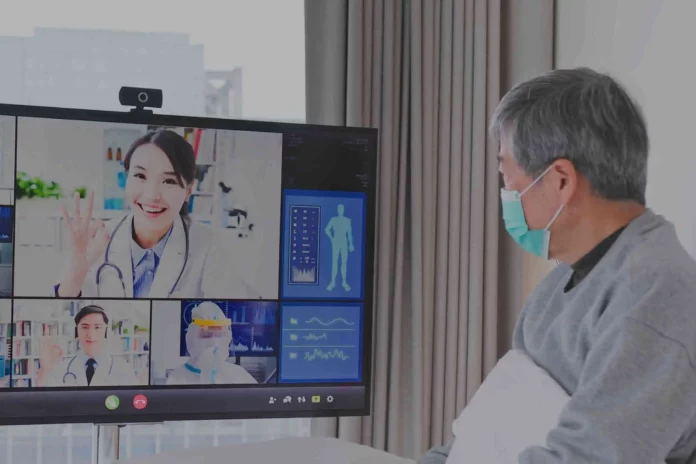In recent years, telemedicine has emerged as a transformative force in the healthcare industry, reshaping how patients access medical care and how healthcare providers deliver services. The rise of telemedicine, accelerated by technological advancements and global events like the COVID-19 pandemic, is revolutionizing patient care by offering increased convenience, accessibility, and efficiency. This blog post explores the key ways in which telemedicine is changing the landscape of healthcare, its benefits, challenges, and future prospects.
1. What is Telemedicine?
Telemedicine refers to the use of technology to provide healthcare services remotely. It encompasses a range of applications, including virtual consultations, remote monitoring, and mobile health apps. Telemedicine enables patients to receive medical advice, diagnosis, and treatment without needing to visit a healthcare facility in person. This approach leverages various technologies, such as video conferencing, phone calls, and online messaging, to connect patients and healthcare providers.
2. Benefits of Telemedicine
Telemedicine offers numerous advantages that are reshaping patient care and improving the overall healthcare experience.
- Increased Accessibility: Telemedicine breaks down geographical barriers, making healthcare accessible to individuals in remote or underserved areas. Patients who may have previously struggled to reach a healthcare facility can now receive care from the comfort of their homes. This is particularly beneficial for those with mobility issues, chronic conditions, or living in rural locations.
- Convenience and Time Savings: Virtual consultations eliminate the need for travel, reducing the time and expense associated with in-person visits. Patients can schedule appointments at their convenience, avoiding long wait times and minimizing disruption to their daily lives. This convenience enhances patient satisfaction and encourages timely medical attention.
- Continuity of Care: Telemedicine facilitates ongoing care management, allowing healthcare providers to monitor patients’ conditions over time. Regular check-ins and follow-up appointments can be conducted virtually, ensuring continuity of care and timely adjustments to treatment plans. This is especially valuable for managing chronic conditions and post-operative care.
- Enhanced Patient Engagement: Telemedicine empowers patients to take an active role in their healthcare. By providing easy access to medical information, test results, and treatment options, patients can make informed decisions and engage more effectively in their care. This increased engagement can lead to better health outcomes and improved adherence to treatment plans.
- Cost Efficiency: Telemedicine can reduce healthcare costs by minimizing the need for in-person visits, which can lower overhead expenses for healthcare facilities. Additionally, virtual consultations can help prevent unnecessary emergency room visits and hospitalizations, leading to cost savings for both patients and the healthcare system.
3. Technologies Driving Telemedicine
Several technologies are at the forefront of the telemedicine revolution, enabling remote healthcare delivery and improving patient outcomes.
- Video Conferencing: Video conferencing platforms are a cornerstone of telemedicine, allowing real-time virtual consultations between patients and healthcare providers. These platforms facilitate face-to-face interactions, enabling providers to assess patients’ conditions, offer medical advice, and discuss treatment options.
- Remote Monitoring Devices: Remote monitoring devices, such as wearable health trackers and home medical equipment, enable patients to track their vital signs and health metrics from home. These devices transmit data to healthcare providers, who can monitor patients’ conditions and make informed decisions about their care.
- Mobile Health Apps: Mobile health apps offer a range of functionalities, including symptom checkers, appointment scheduling, and medication reminders. These apps empower patients to manage their health proactively and stay connected with their healthcare providers.
- Electronic Health Records (EHRs): EHR systems are integral to telemedicine, allowing healthcare providers to access and update patient records remotely. EHRs ensure that patient information is readily available for virtual consultations, facilitating accurate diagnosis and treatment.
4. Challenges and Considerations
While telemedicine offers numerous benefits, it also presents several challenges that need to be addressed to ensure effective and equitable care.
- Technology Barriers: Not all patients have access to the necessary technology or internet connectivity for telemedicine. Addressing these barriers is crucial to ensure that telemedicine services are accessible to all individuals, regardless of their technological resources.
- Privacy and Security: Ensuring the privacy and security of patient information is paramount in telemedicine. Healthcare providers must adhere to regulations such as HIPAA (Health Insurance Portability and Accountability Act) to protect patient data and prevent unauthorized access.
- Licensing and Regulation: Telemedicine practices are subject to varying state and national regulations. Healthcare providers must navigate these regulations to ensure compliance and deliver care across different jurisdictions. Streamlining licensing and regulatory processes can help facilitate the growth of telemedicine.
- Quality of Care: While telemedicine can enhance access to care, there are concerns about the quality of care compared to in-person visits. Ensuring that virtual consultations provide the same level of care as traditional appointments requires ongoing evaluation and refinement of telemedicine practices.
5. The Future of Telemedicine
The future of telemedicine holds exciting possibilities as technology continues to advance and the healthcare landscape evolves.
- Integration with Artificial Intelligence (AI): AI has the potential to enhance telemedicine by providing advanced diagnostic tools, predictive analytics, and personalized treatment recommendations. AI-powered systems can assist healthcare providers in analyzing patient data and improving diagnostic accuracy.
- Expansion of Telehealth Services: The scope of telemedicine is expected to expand beyond primary care to include specialties such as mental health, dermatology, and remote surgery. As technology advances, telemedicine will increasingly support a broader range of healthcare services.
- Improved Patient Experience: Ongoing innovations in user interfaces, communication tools, and remote monitoring devices will enhance the telemedicine experience for both patients and providers. Efforts to improve accessibility, usability, and integration will drive greater adoption and effectiveness of virtual healthcare.
- Global Reach and Collaboration: Telemedicine has the potential to foster global collaboration and knowledge-sharing among healthcare professionals. International telemedicine platforms can facilitate cross-border consultations, research collaborations, and the exchange of best practices.
The rise of telemedicine is revolutionizing patient care by offering increased accessibility, convenience, and efficiency. As technology continues to advance, telemedicine will play an increasingly integral role in healthcare delivery, improving patient outcomes and transforming the way care is provided. While challenges remain, the benefits of telemedicine are undeniable, offering a glimpse into the future of healthcare where virtual interactions and remote monitoring become the norm. Embracing telemedicine and addressing its challenges will pave the way for a more accessible, patient-centric, and technologically advanced healthcare system.


